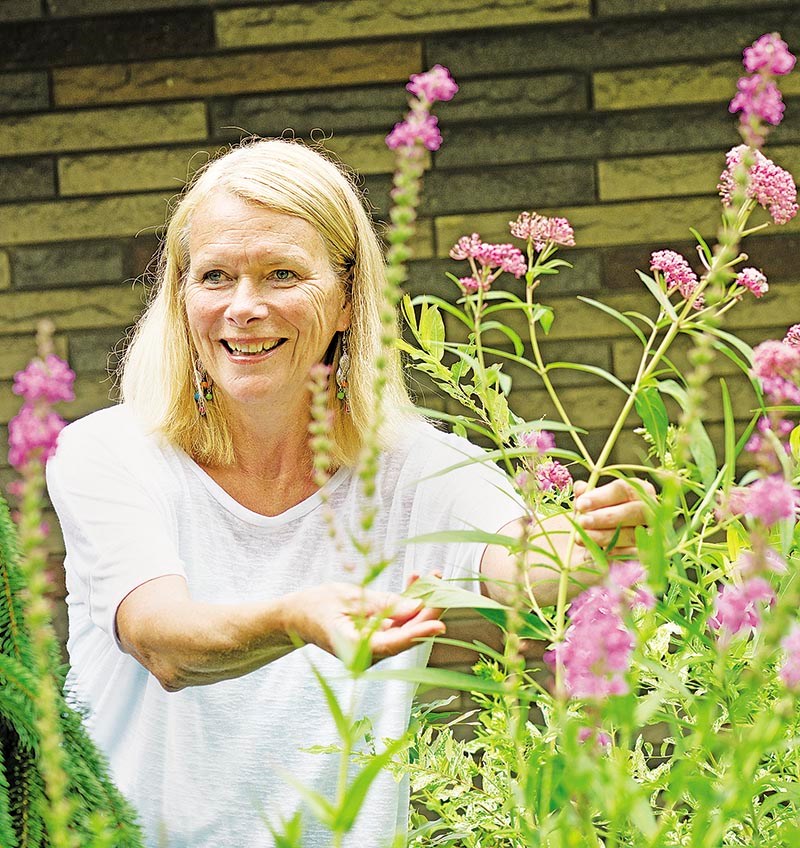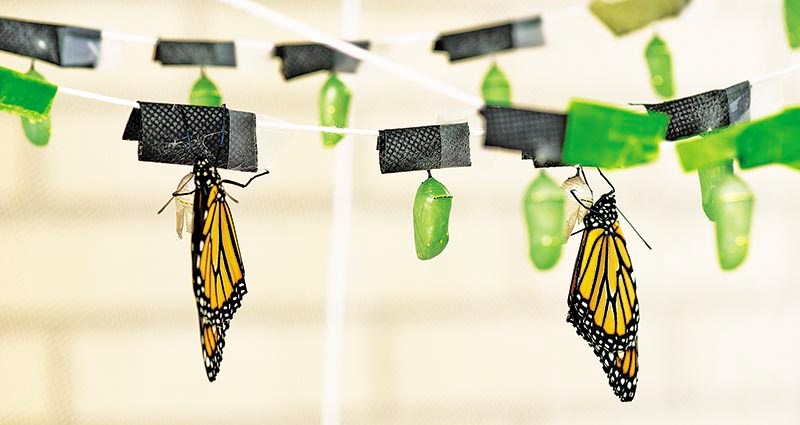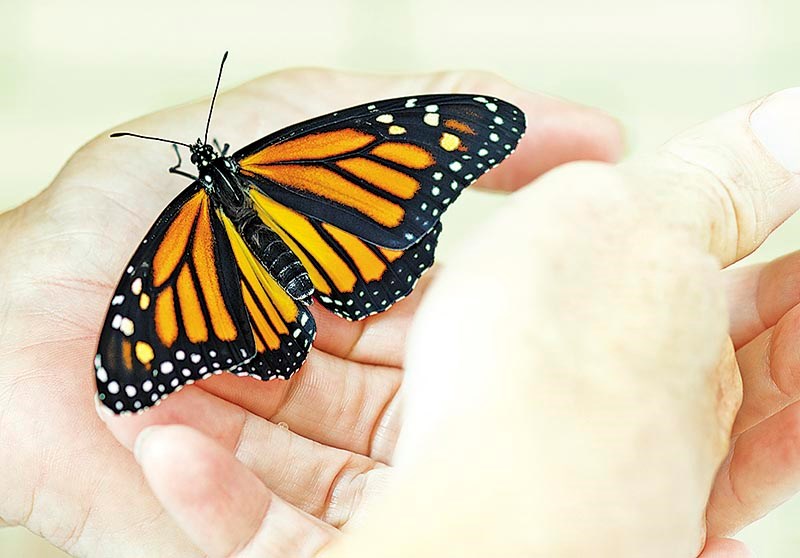George Mathewson
“Here’s one,” says Karen Durance, flipping over a leaf to reveal a tiny white dot.
It’s an egg, the size of a pinhead. And if all goes well, in three weeks another monarch butterfly will leave her Sarnia backyard and head for Mexico.
“It’s absolutely amazing to see it,” says Durance, who expects to raise and release about 80 butterflies this summer through her newfound hobby.
“That’s not to say they couldn’t do it on their own. But to have a butterfly on your hand, and watch it fly off – it’s freedom.”
As hobbies go, raising butterflies is a relatively easy and inexpensive one, requiring only some containers to rear caterpillars and a little garden knowledge.
Different butterflies prefer different host plants. Karen and her husband Ross have planted three kinds of milkweed to attract monarchs, as well as dill, parsley and fennel for black swallowtails.
On this day, they have monarchs in all four stages of development: egg-studded leaves gathered from the yard, munching caterpillars that double in size daily, and chrysalises hanging like green jewels. And, right on cue, a pair of adults emerge, unfolding and stretching like the stars at a photo shoot.
“As a hobby, it kind of found me,” says Karen, who a few years ago visited a friend who raised butterflies and was enthralled by the mysterious transformation.
“Now, every morning I come out and turn over leaves to see what I’ve got.”
Monarch butterflies are known for their incredible mass migration to Mexico each winter, a journey of up to 4,800 kilometres (3,000 miles). Only those that emerge in late summer and early fall head south, weighing less than a paper clip but travelling up to 160 kilometres a day.
But scientists are worried about the future of monarchs following a series of natural disasters in their Mexican wintering grounds and the loss of milkweed plants in their summer home.
Ross Durance says giving such a remarkable insect a helping hand at survival is rewarding.
“You see this little spot on a milkweed leaf and it turns into this,” he says, pointing to the newly hatched butterflies.
“I drove down to Cancun with a friend and that was quite a drive. I can’t imagine doing it with wings.”
 Karen Durance grows swamp milkweed at her Sarnia home to attract egg-laying monarch butterflies. Glenn Ogilvie
Karen Durance grows swamp milkweed at her Sarnia home to attract egg-laying monarch butterflies. Glenn Ogilvie

New adults open and stretch their wings after emerging from hanging green chrysalises. Glenn Ogilvie
